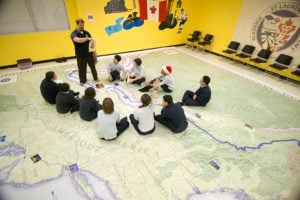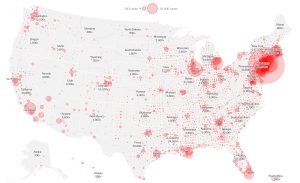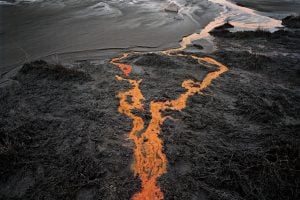The world on Mercator Projection. In order to portray our spherical Earth in two dimensions, the projection exaggerates the size of land forms near the poles, and shrinks those nearer the equator. (Map: Daniel R. Strebe/Wikimedia Commons)
In trying to correct for proportion, other cartographers have sacrificed perspective. The Lambert cylindrical equal-area projection depicts the Earth as short and wide, the Gall-Peters projection tall and long.
Enter Mark Jeffery. The Rossland, B.C.-based software developer and self-professed map geek behind goodwoodglobes has a simple solution to the problem of distortion: let the Earth be round.
“Ever since I was a child, I’ve been fascinated by maps and the fact that you literally cannot represent the surface of the Earth on a two-dimensional piece of paper without distorting the size of the oceans and the land masses,” he says. “We live on a round planet, so in my mind, the best way to represent the continents and oceans is on a spherical globe.”
But not just any globe. Jeffery wants to create wooden globes with the continents, oceans and mountain ranges carved in relief on the surface, so you can feel as well as see the geography of our planet. For the past two summers, Jeffery has used a computer numerical control (CNC) machine — essentially a tooling machine that carves a piece of material to precise specifications by following programmed instructions — to create prototype relief maps, and he’s now experimenting with the best way to fit the pieces together.
Carved from maple wood, the globes are meant to be both beautiful and functional. “You’ll be able to pick it up and turn it in any direction, and I think that kind of perspective on the place that we live is super valuable and educational,” Jeffery says.
Take Canada, for instance: “On a globe, as well as seeing the true shape of Canada — which is very different from the way it looks on most world maps — you can see how our country wraps around the Arctic Ocean, along with Greenland, Russia and islands such as Svalbard.”






